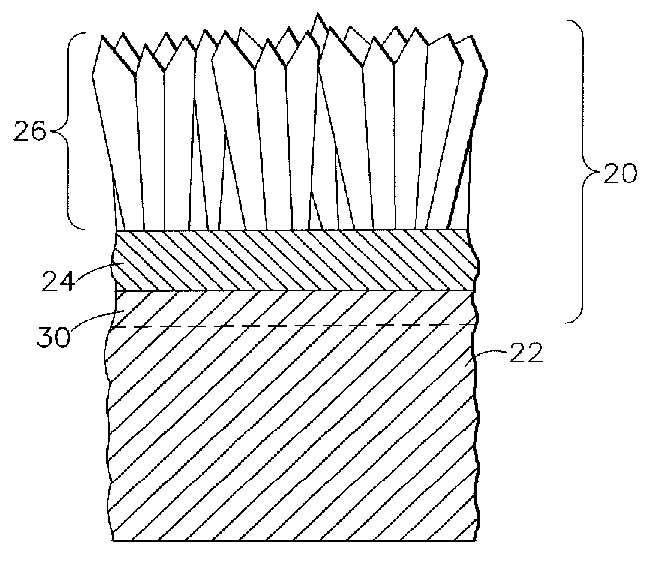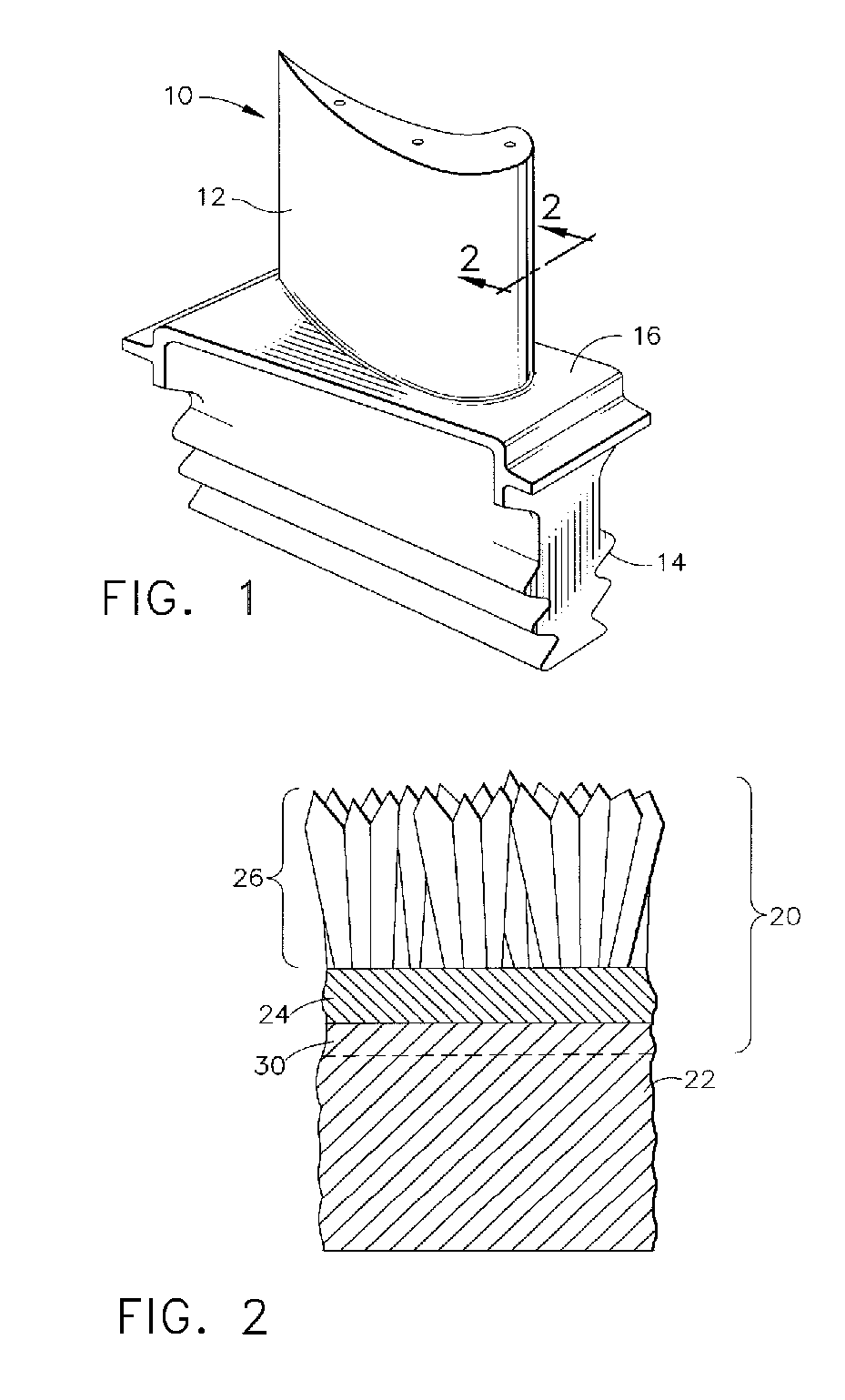Structural environmentally-protective coating
- Summary
- Abstract
- Description
- Claims
- Application Information
AI Technical Summary
Benefits of technology
Problems solved by technology
Method used
Image
Examples
Embodiment Construction
[0014]The present invention is generally applicable to components that operate within environments characterized by relatively high temperatures, and are therefore subjected to severe thermal stresses and thermal cycling. Notable examples of such components include the high and low pressure turbine nozzles and blades, shrouds, combustor liners and augmentor hardware of gas turbine engines. Of particular interest are components that must withstand high g-forces, such as rotating airfoil components of gas turbine engines. One such example is a high pressure turbine blade 10 shown in FIG. 1. The blade 10 includes an airfoil 12 against which hot combustion gases are directed during operation of the gas turbine engine. The airfoil 12 is hollow to permit the flow of cooling air through passages within the blade 10, with the result that the exterior of the airfoil 12 is generally defined by walls whose outer surfaces are subjected to severe attack by oxidation, corrosion, and erosion and w...
PUM
| Property | Measurement | Unit |
|---|---|---|
| Temperature | aaaaa | aaaaa |
| Temperature | aaaaa | aaaaa |
| Temperature | aaaaa | aaaaa |
Abstract
Description
Claims
Application Information
 Login to View More
Login to View More - R&D
- Intellectual Property
- Life Sciences
- Materials
- Tech Scout
- Unparalleled Data Quality
- Higher Quality Content
- 60% Fewer Hallucinations
Browse by: Latest US Patents, China's latest patents, Technical Efficacy Thesaurus, Application Domain, Technology Topic, Popular Technical Reports.
© 2025 PatSnap. All rights reserved.Legal|Privacy policy|Modern Slavery Act Transparency Statement|Sitemap|About US| Contact US: help@patsnap.com


